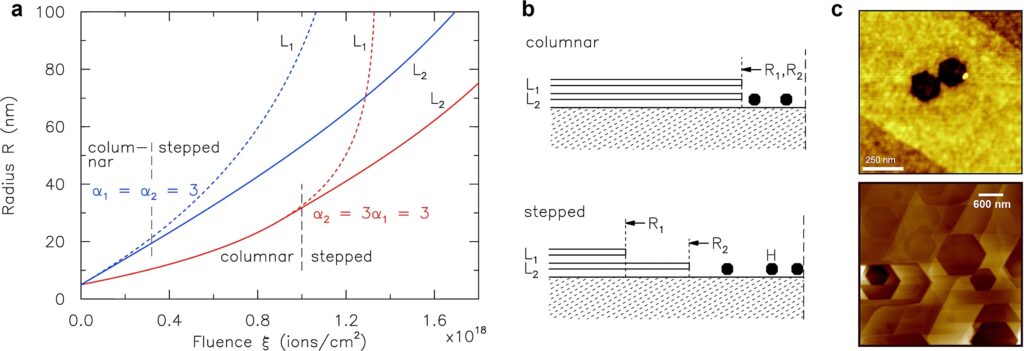Developing predictive mechanics model for material under extreme conditions
We seek to develop a physics-based continuum scale model (Finite Element Analysis or Finite Difference) to predict the material and structural response of a given problem by utilizing several well-trusted computational tools.
The problems we tackle in this area are related to the material mechanics under extreme conditions such as fracture and fatigue, ablative materials for Mars entry, and material sputtering under high-energy plasma beams.

For most of our projects, we adopt a scale-bridging simulations method:
In particular, FEA and FD (continuum model) have been widely used for structural and thermal analysis. However, the accuracy at the continuum scale depends highly on the material properties (yield strength, diffusion coefficient, etc.).
These properties can be identified through Molecular Dynamics (MDs), yet the accuracy of MD is confided in the choice of potential between the atoms. This potential can be calculated and verified via the Density Functional Method (DFT) which takes into account quantum calculations from Schrodinger Equations.
By starting from DFT (quantum scale), we can build our model up to nano then micro-scale to get an efficient predictive analysis for challenging problems.
Additionally, we also have developed an FEA method named: Field Projection Method. This is an inverse method to determine the tractions along a surface or interface from measurement data in the far-fields for both linear and non-linear materials which has significant engineering and nanoscience applications.
We have verified this method extensively numerically and have applied it to experimental data to identify the crack-tip cohesive zone constitutive relations in an isotropic solid for both fracture and fatigue problems.
CURRENT WORK:
Modeling of Material Sputtering under high-energy plasma beam:
- We want to develop an FEA and FD model to simulate the surface evolution and sputtering response of a composite containing graphitic structures, Silicon Oxide and hexagonal Boron Nitride that goes under long extended high-energy ion bombardment present in ion engine and Hall Thruster.
- This project is part of the Joint Advance Propulsion Institute (JANUS) – a 5-year multi-university NASA-funded Space Technology Research Institutes (STRI) program. For a broad view of the project, please visit: NASA JANUS
Equivalent fatigue cohesive zone law for widely used materials:
- Recently, we have extended FPM to reconstructed the cohesive zone laws for steady-state fatigue crack growth from elastic strain field information. We are now applied this method on experiment results from neutron and synchotron X-ray diffraction to identify the functional form of the equivalent fatigue cohesive zone law for Magnesium and Steel.
Applying Phase Field Fracture in Ablative Problem:
- We want to apply phase field fracture modeling to extend our ablative material model from FD to FEA. We now are working on the interpretation of this model through an equivalent cohesive zone law.
MOST RECENT WORK:
Ablative Material:

We perform scale-bridging molecular dynamics (MD) simulations based on a reactive-force-field (ReaxFF) potential to elucidate the pyrolysis kinetics of a highly crosslinked phenolic formaldehyde resin. We show that bulk pyrolysis starts at temperatures of ∼500 K, and exhibits a temperature dependence that follows the Arrhenius law. Using the pyrolysis rates from MD simulations, we develop a thermal material response model applied to predict the heat transfer within a charring syntactic foam ablator. Our model predictions of the char thickness and temperature distributions, under a variety of heat loads, are in good agreement with prior experiments.
Etching of Graphene:

We study the atomic-scale etching mechanisms of multilayer graphene, and the subsequent formation of nanopores, when exposed to downstream hydrogen plasma. Our molecular dynamics simulations based on reactive force-field potential reveal precise energy regimes for the transport of ions through, and selective etching of, individual graphene layers within the multilayer structure. We establish the basal plane and edge etching rates of the individual graphene layers as a function of ion energy, and introduce a micromechanics model to predict the 3D-patterned pore structure at experimental length- and time-scales. Our results demonstrate the development of columnar holes in multilayered graphene, which transition to stepped-edge holes at higher fluence due to cumulative effects of basal-plane etching.
